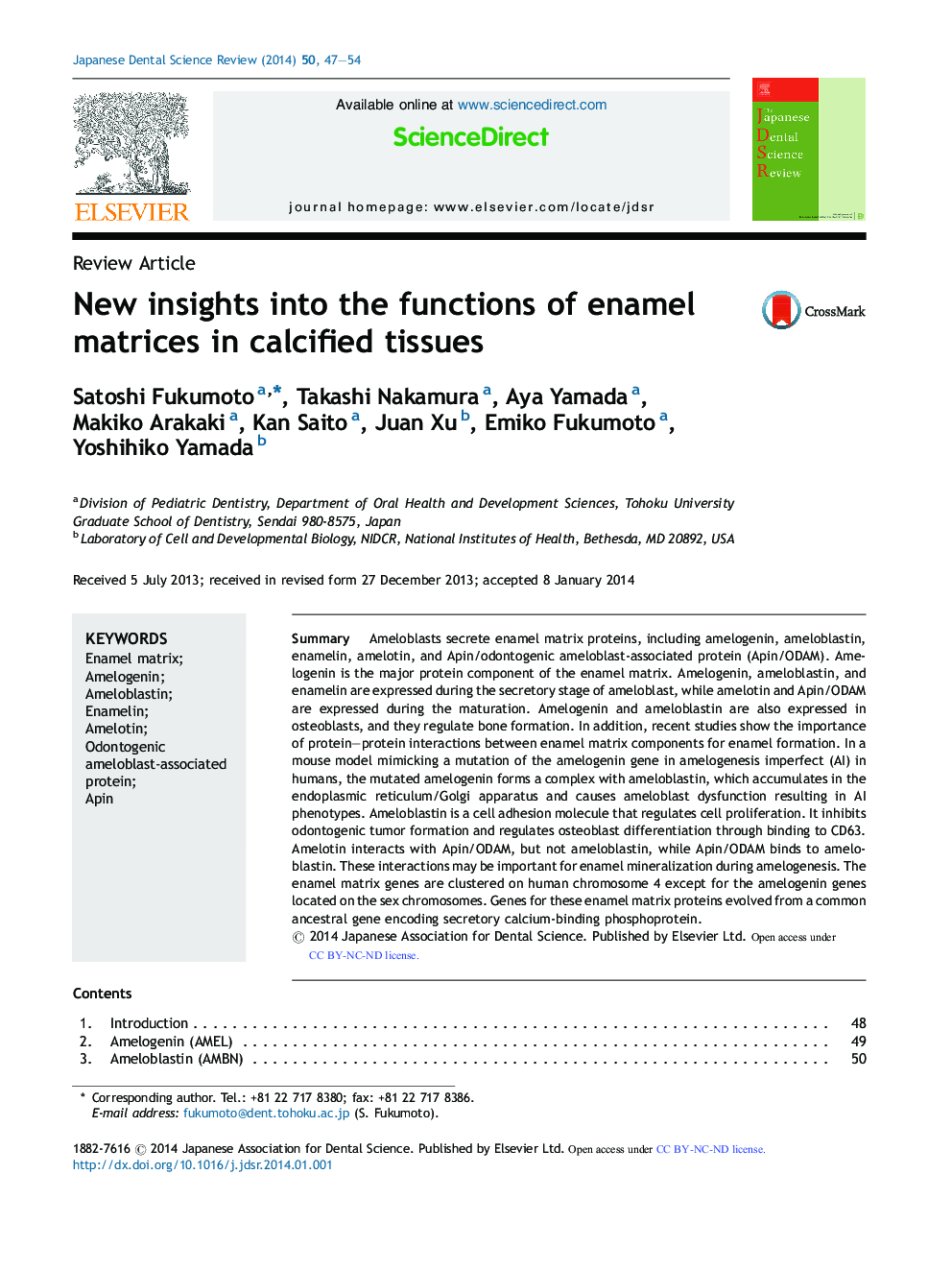| کد مقاله | کد نشریه | سال انتشار | مقاله انگلیسی | نسخه تمام متن |
|---|---|---|---|---|
| 3136238 | 1195459 | 2014 | 8 صفحه PDF | دانلود رایگان |
SummaryAmeloblasts secrete enamel matrix proteins, including amelogenin, ameloblastin, enamelin, amelotin, and Apin/odontogenic ameloblast-associated protein (Apin/ODAM). Amelogenin is the major protein component of the enamel matrix. Amelogenin, ameloblastin, and enamelin are expressed during the secretory stage of ameloblast, while amelotin and Apin/ODAM are expressed during the maturation. Amelogenin and ameloblastin are also expressed in osteoblasts, and they regulate bone formation. In addition, recent studies show the importance of protein–protein interactions between enamel matrix components for enamel formation. In a mouse model mimicking a mutation of the amelogenin gene in amelogenesis imperfect (AI) in humans, the mutated amelogenin forms a complex with ameloblastin, which accumulates in the endoplasmic reticulum/Golgi apparatus and causes ameloblast dysfunction resulting in AI phenotypes. Ameloblastin is a cell adhesion molecule that regulates cell proliferation. It inhibits odontogenic tumor formation and regulates osteoblast differentiation through binding to CD63. Amelotin interacts with Apin/ODAM, but not ameloblastin, while Apin/ODAM binds to ameloblastin. These interactions may be important for enamel mineralization during amelogenesis. The enamel matrix genes are clustered on human chromosome 4 except for the amelogenin genes located on the sex chromosomes. Genes for these enamel matrix proteins evolved from a common ancestral gene encoding secretory calcium-binding phosphoprotein.
Journal: Japanese Dental Science Review - Volume 50, Issue 2, May 2014, Pages 47–54
